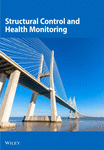Sensor network paradigms for structural health monitoring†
This article is a U.S. Government work and is in the public domain in the U.S.A.
Abstract
Structural health monitoring (SHM) is the process of detecting damage in structures. The goal of SHM is to improve the safety and reliability of aerospace, civil and mechanical infrastructure by detecting damage before it reaches a critical state. A specific topic that has not been extensively addressed in the SHM literature is the development of rigorous approaches to designing the SHM sensing system that is used to address the data acquisition portion of the problem. To date, almost all such system designs are done somewhat in an ad hoc manner where the engineer picks a sensing system that is readily available and that they are familiar with, and then attempts to demonstrate that a specific type of damage can be detected with that system. In many cases this approach has been shown to be ineffective and as a result researchers have begun to develop sensor networks specially suited for SHM. Based on this research, several sensor network paradigms for SHM have emerged, and this paper is intended to provide an overview of these paradigms. This paper will first provide a brief summary of the statistical pattern recognition approach to SHM problem. The data acquisition portion of the paradigm is then addressed in detail where the various parameters of the system that must be considered in its design and subsequent field deployment are summarized. Published in 2005 by John Wiley & Sons, Ltd.




